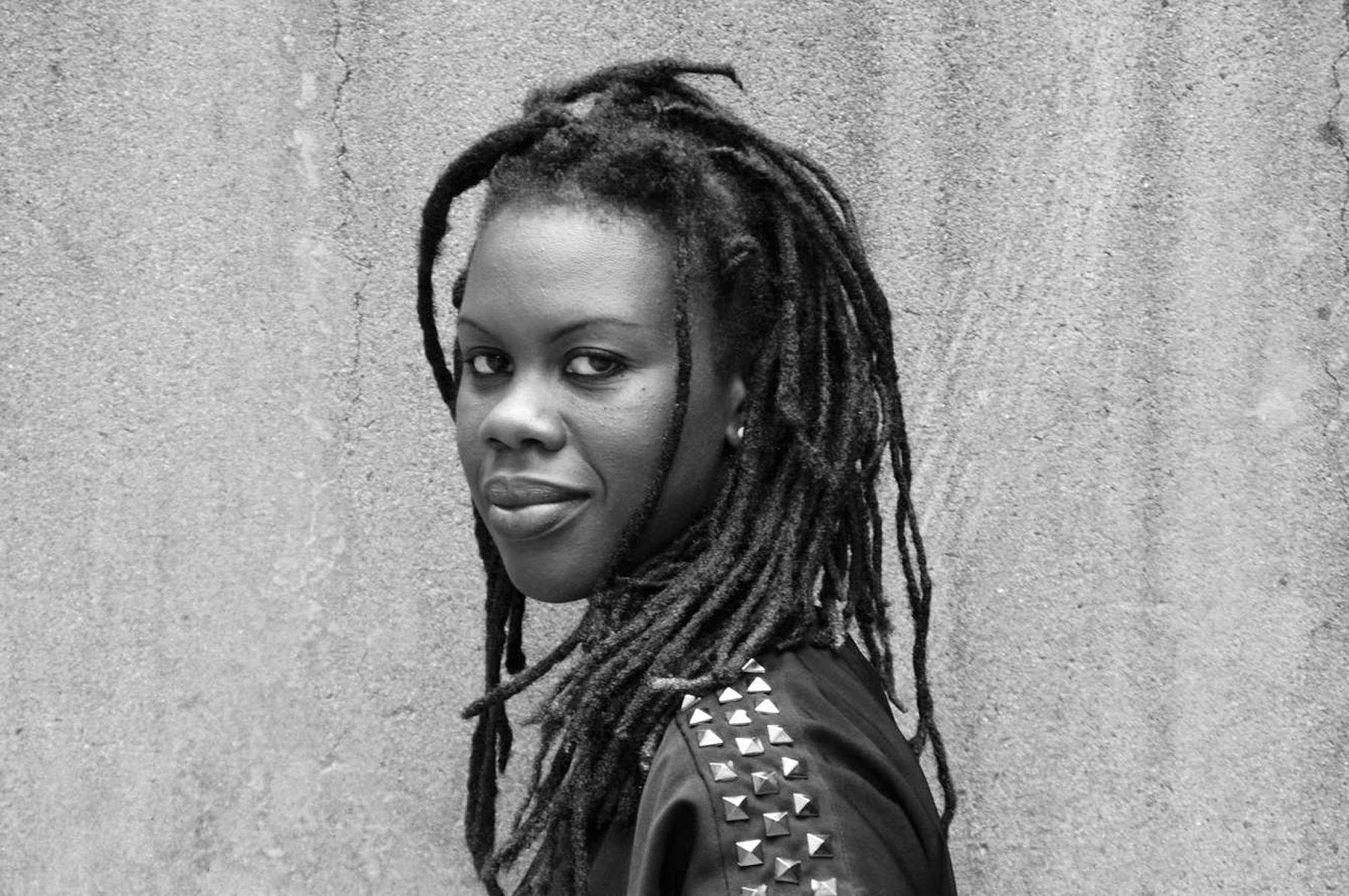
At MIT, it’s amazingly easy to find an engineering student preparing for a role in a Shakespeare play, a history student writing a script, or a young computer scientist crafting a high tech theater set. Assistant professor of theater Charlotte Brathwaite says that during her first two years on the MIT faculty, she has noticed certain characteristics that theater and the STEM fields have in common.
“In theater, as in the STEM disciplines, we imagine the impossible and try to make that possible,” says Brathwaite, an independent director of texts, operas, dance, multimedia and site-specific installations, and concerts. “We not only imagine, but create the world as we think the world should be.”
Addressing major issues
As a result, theater can be a vehicle for addressing major societal issues, from street violence to climate change, she says. “People can speak their truth in the theater and whether you like it or not, you can let it sit with you. In a democracy, it’s important for people to be able to tell their points of view.”
Untold stories are of particular interest to Brathwaite, who says she’s fascinated by “people in the crevices and cracks who are ignored by society.” Her projects often address issues of race, sex, and power, “opening up the conversation” about topics that cause pain or trauma with an eye toward building ties within and across communities.
Building community
Community-building is a central goal for Brathwaite — someone who, more than most, is a citizen of the world. Born in England to parents from Barbados, Brathwaite was raised in Canada before moving to the United States at 15 to join the New York theater company La MaMa E.T.C’s Great Jones Repertory. For a few years, she traveled the world performing, then she went on to get her undergraduate degree in the Netherlands and her graduate degree from Yale University. Before coming to MIT in 2014, she had also lived in Paris, Amsterdam, and Berlin.
“One of the things that draws me to the arts is the large community you can build,” she says. “My coming to MIT connects to that; it’s branching out into a larger community than I had had before, connecting to scholars, researchers, and students of science, technology, urban planning, finance, etc.”
Focusing on the human factor
At MIT, Brathwaite teaches many students whose career ambitions lie outside the arts, yet theater remains an important discipline for them, she says, because it plumbs the depths of human experience.
“That focus on human needs, human interaction — strengthening and enlarging what those are — that’s one of the really important things about doing theater at MIT,” she says. “At the end of whatever research and experiments our students do, there is a human being.”
Institute Professor Marcus Thompson, one of Brathwaite’s colleagues in MIT Music and Theater Arts, agrees. “The MIT mission is to serve humanity, he says, “and the arts provide a powerful way for our students to grow in knowledge and understanding of the human condition.”
Already, Brathwaite says she has been impressed by the growth she’s seen among students in such classes as 21M.600 (Introduction to Acting), in which she teaches students to “exercise their creative muscles” and share their ideas. Such skills will be important to students in whatever careers they choose, she says.
“At some point you’re going to need to stand in front of a group of people and explain what you want to do or what plan you have. To be able to stand with confidence behind your own ideas is a really important skill across the board,” Brathwaite says.
New areas of exploration
While Brathwaite is helping MIT students to explore new avenues of thought and expression, she says that MIT is also opening up new areas of exploration for her. Notably, she is currently collaborating on a project with composer Guillermo E. Brown that blends concern for the degradation of the environment — exemplified by the loss of bee colonies — with a look at the degradation of human society, as illustrated by street violence and the failure of the criminal justice system.
“This project, I don’t know if it would exist if I wasn’t at MIT. This is a whole new strain of thinking for me,” she says, adding that she hopes to enlist partners from science and engineering to collaborate on the work.
In addition, Brathwaite is currently engaged in a variety of other projects. She just completed directing Meshell Ndegochello’s “Can I Get a Witness,” a multidisciplinary theatrical work inspired by the work of James Baldwin — which opened in New York City in December to glowing reviews.
Forthcoming projects include directing Shasta Geaux Pop as part of the Under the Radar Festival at The Public Theater in New York; “Dolphins and Sharks,” a new play by James Anthony Tyler at Labyrinth Theater in New York; and a new choral music and rap piece “(BE)LONGING,” composed by Byron Au Yong and written by Aaron Jafferis that will premiere at Virginia Tech in March.
“It’s a unique time to be a black director,” Brathwaite observes, noting that in searching for ways to articulate her response to today’s culture of violence she has been hugely inspired by James Baldwin’s message of universal love. “Baldwin says, ‘If I love you, I have to make you conscious of the things you do not see.'”
Ultimately, Brathwaite believes that theater brings people together — in a way that makes a difference in the world. “In our struggles, all of us have more things in common than not,” she muses. “I think we’re more connected than we realize.”


![[World Alzheimer’s Day] Samsung Research Advances Early](https://loginby.com/itnews/wp-content/uploads/2025/09/1758375215_World-Alzheimer’s-Day-Samsung-Research-Advances-Early-238x178.jpg)




